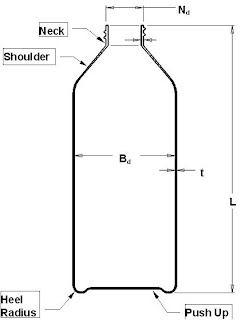Increase Injection Velocity
Raising the injection velocity will reduce the time taken to fill the cavity and it is therefore possible to achieve faster cooling of the preform. However, it will also increase shear in the material. Shear is a major factor affecting overheating of the material, A.A. Generation and I.V. reduction, therefore increasing velocity will damage the PET resin.
When working with hot preform method, the injection velocity will also make a significant difference to the material distribution in the finished container. Filling faster means that the preform will be colder when the mold opens and its temperature balance will also have changed. Typically, the shoulder area will become relatively cooler than the base area giving less stretch at the top of the preform.
When working with warm / cool / cold preform method the temperature related effects of increasing the velocity are either greatly reduced or non-existent
Oil flow into the injection cylinder must be increased.
For machines fitted with electronic injection control, increase the velocity percentage value on the injection screen of the electronic injection control system. Maximum allowable setting is 99%.
For machines without electronic injection control, increase the setting of the valve found on the operator side of the injection unit.
In most cases, the five steps of injection control can be set to the same value. Different values may be advantageous in cases of complicated preform design or technically difficult bottles.
Increasing the injection velocity too far may cause other preform defects such as lowered I.V., increased A.A., silver streaks and internal sink marks.
When working with hot preform method, the injection velocity will also make a significant difference to the material distribution in the finished container. Filling faster means that the preform will be colder when the mold opens and its temperature balance will also have changed. Typically, the shoulder area will become relatively cooler than the base area giving less stretch at the top of the preform.
When working with warm / cool / cold preform method the temperature related effects of increasing the velocity are either greatly reduced or non-existent
Oil flow into the injection cylinder must be increased.
For machines fitted with electronic injection control, increase the velocity percentage value on the injection screen of the electronic injection control system. Maximum allowable setting is 99%.
For machines without electronic injection control, increase the setting of the valve found on the operator side of the injection unit.
In most cases, the five steps of injection control can be set to the same value. Different values may be advantageous in cases of complicated preform design or technically difficult bottles.
Increasing the injection velocity too far may cause other preform defects such as lowered I.V., increased A.A., silver streaks and internal sink marks.



Comments